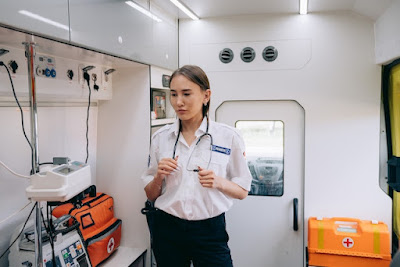 |
| First aid for fainting cases |
Fainting is a condition in which a person loses consciousness and the ability to respond to people and stimuli around him, it occurs when the brain does not receive its adequate blood supply, sometimes it may not have medical significance, at other times it is caused by serious disorders that most often affect the heart, in any case, this condition should be treated as a medical emergency by the necessary first aid, which will be mentioned in this article.
- First aid for fainting
If you see someone fainting, do the following:
- Lay him on his back and make sure he is breathing.
- To aid blood flow to the brain, raise the person's legs above the level of the heart.
- Work to loosen all tight clothing such as belts or collars.
- Give a person an easily absorbed dessert if you know that he has diabetes and he has missed a meal, this will help raise blood sugar levels.
- Call emergency (911) , if a person has difficulty breathing , cyanosis of the lips or face , arrhythmia , chest pain, or it is difficult for you to wake him up, especially if any of the following conditions apply to him:
- A person's head is severely injured during fainting.
- Fainting has been repeated more than once over the past month.
- If the affected person has heart problems, or if she is a pregnant woman.
- First aid for someone who is not breathing
If the person is not breathing, you should check the upper part of the throat , to make sure if there is something blocking the airway , and try to remove it using one finger to open the channel, then call emergency, in case the person is not breathing even though there is nothing blocking the airway, call emergency (911) directly , and start cardiopulmonary resuscitation until the ambulance arrives , below we mention the steps of pulmonary resuscitation in this case:
- Lay the person on his back on a flat, hard surface, and protect his neck from any hurtful movements, as he could sustain an injury to his spine.
- Bend your knees and sit beside his shoulders with your torso on his chest.
- Your palm should be at the center of his chest.
- Place your other hand directly on top of your first hand and interlock your fingers.
- Keep your elbows straight, with your shoulders pointing forward, giving your upper body more strength.
- Press down on his chest firmly.
- Repeat the previous compression about 30 times, at a rate of twice per second, or 100-120 compressions per minute.
- First aid precautions in case of fainting
The following things should be avoided if you see someone fainting:
- Don't slap or shake him too hard.
- Do not spray it with water.
- Don't yell at him.
- No pillow should be placed beneath his head.
- Do not change his posture, such as sitting or standing.
- What do you do if you feel like you are about to faint?
If you feel like you are going to faint, here are these tips:
- Sit or lie down and don't get up too quickly.
- Put your head between your knees when sitting.
- Drink some water and eat something.
- take a deep breath.
- Signs that a person has entered fainting
There are some warning signs that tell you that someone is about to faint, including the following:
- The appearance of pallor, sweating and coldness on the skin.
- feeling dizzy
- slowed heartbeat
- feeling sick
- Frequent yawning.
- tightness in the chest
- palpitation.
- Causes of the occurrence of fainting
Loss of consciousness is often short and transient , it has many causes, among which the following stand out:
- Dehydration, or exposure to high heat.
- Frequent skipping of meals, low blood sugar.
- Stress as a result of intense work or exercise.
- Stand up very quickly.
- Problems with the heart or nervous system.
- Breathing too fast (hyperventilation).
- Drug or alcohol abuse.

Comments
Post a Comment